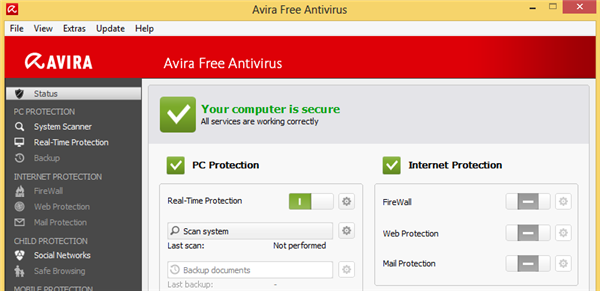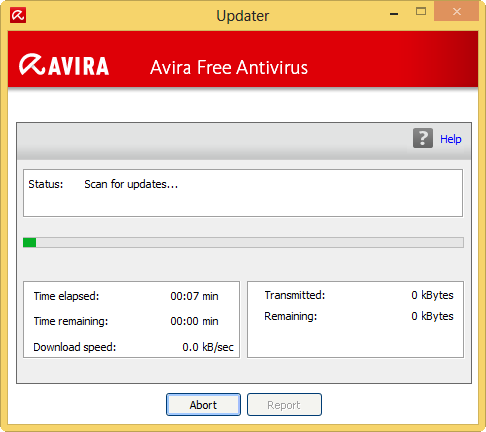If you’re using a Windows-based PC, you’ve had to recover your computer from a virus attack at some point since using it. They’re never fun, you often lose data and can even have your personal information compromised. If your computer has been hit by a nasty virus, don’t worry – you can recover from a virus attack easily.
1. Disconnect
The moment you realize something’s amiss or you have a virus, disconnect your PC from the Internet. If you’re on a home network connected to other computers, get off it. By isolating your PC, you can not only keep the virus from spreading to other computers but also keep any information being transmitted by the virus from getting to its destination.
2. Scan, Scan, Scan

After you’ve disconnected, you’ll need to scan for your computer with anti-virus software (I hope you had one installed), anti-malware and potentially anti-spyware. It all depends on the virus. Utilize your anti-virus software first. If you can’t initiate a scan directly, you may need to reboot your PC and run the anti-virus from the CD or DVD itself. When you have a bad virus infection, this is the safest way to begin eliminating the threat.
After you have pinpointed the cause of the virus and eliminated it with your anti-virus software, you’ll want to restart your PC and run another scan just to be sure. Viruses can hide in folders and areas of the computers you’d never think to look, so by scanning a second time, you can ensure you eliminated the virus entirely.
If for some reason, your computer fails to find the virus, you may need to run anti-malware and anti-spyware software. If you can pinpoint the type of virus, or perhaps where it came from, you can search the Web for more directions on how to properly eliminate it from your PC. Following those steps will eliminate the virus from your PC permanently.
You can also try to eliminate Windows viruses with Linux, following the steps in our guide, if all else fail.
3. Re-install, Restore and Clean Up
If you’re confident you’ve found and eliminated the cause of the virus, your next step is to begin recovering what you lost. Viruses have a nasty habit of installing software, uninstalling programs and even deleting or corrupting files. If this is the case, you may need to re-install software and recover files or folders from backups you’ve made.
Keep in mind that the restore process isn’t always smooth. If you’re not quite sure what was affected, you’ll need to go through your computer and see what’s missing. While you could use a Windows System Restore, it’s not always a wise idea after a virus attack, since you don’t know where the virus came from or when it first appeared.
If the virus was saved in an area of the System Restore point, you could potentially re-introduce it after getting rid of it. If it’s at all possible, avoid using a Windows System Restore point. This can cause more harm than good.
4. Back Up Your Data
If you had a bad experience trying to clean up your PC after the virus attack, you’ll want to focus on backing up your data so that in the future you don’t have to worry about the clean up as much.
You can back up your data in a variety of ways, such as using removable media or the cloud. It all depends on what you feel comfortable with and what you want to spend. Many cloud-based services are free up to a certain point.
No matter how you backup your data after a virus attack, just make sure to do it. This will help you avoid figuring out what was lost, recovering it and regaining use of your computer.
5. Prevent Future Attacks

Once you’ve been hit by a bad virus on a Windows PC, you may need to increase the security on your computer. This means potentially changing anti-virus software, adding more protection and ensuring they’re up to date. You can set up most software to automatically update itself; this is the best way to make sure you’re on top of the latest virus definitions and protection.
Another thing to consider is what you did to get the virus in the first place. Did you visit a bad web site? Did you open an e-mail from an untrusted source? If you can figure out how the virus infected your PC, you will not want to make the same mistake again.
Conclusion
Just because Windows computers are vulnerable to viruses doesn’t mean they have to be. There are thousands of users who have used a Windows computer for years without issues. Taking precautionary steps as well as knowing how to handle a virus attack will keep you safe from the maximum amount of damage a virus can do.
Melissa Popp has been a freelance writer for over a decade. While she primarily has focused on writing about technology, she’s also written about everything from custom mailboxes to health care to just about anything in between. Melissa is the Content Strategist for Trailerbroker.com, the nation’s leading marketplace for trailers for sale, the Social Media Manager for the best roofing Denver company as well as a Writer here at MakeTechEasier. She’s a proud support of the Denver SEO community and a big fan of online radio.
Subscribe to our newsletter!
Our latest tutorials delivered straight to your inbox
Sign up for all newsletters.
By signing up, you agree to our Privacy Policy and European users agree to the data transfer policy. We will not share your data and you can unsubscribe at any time. Subscribe
